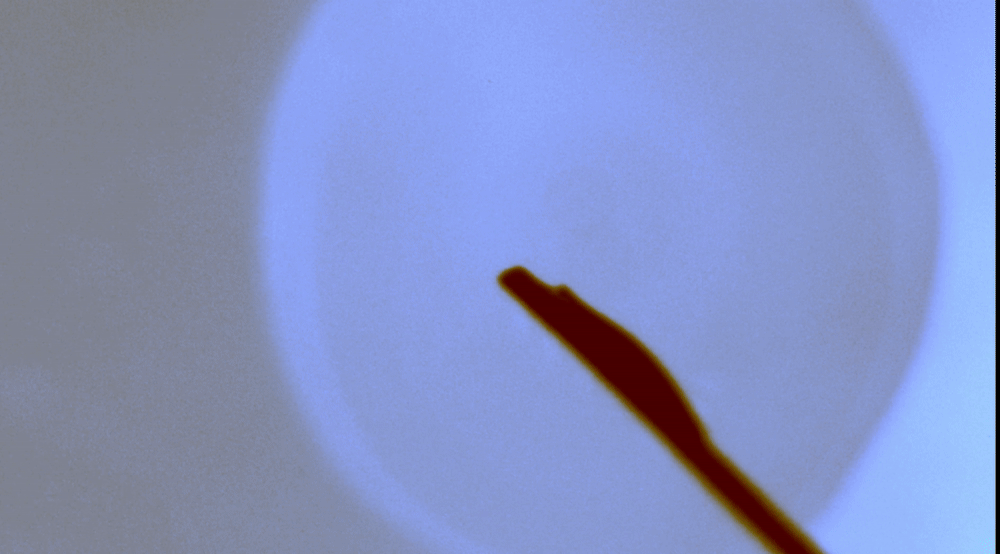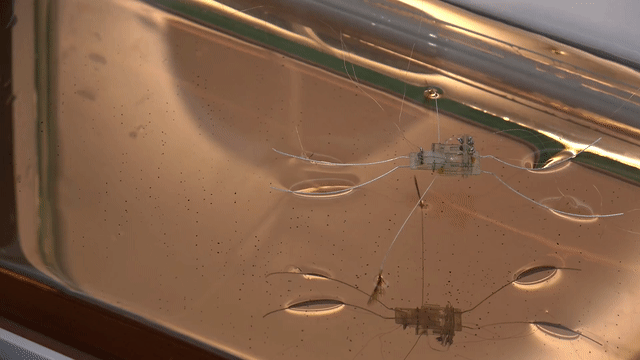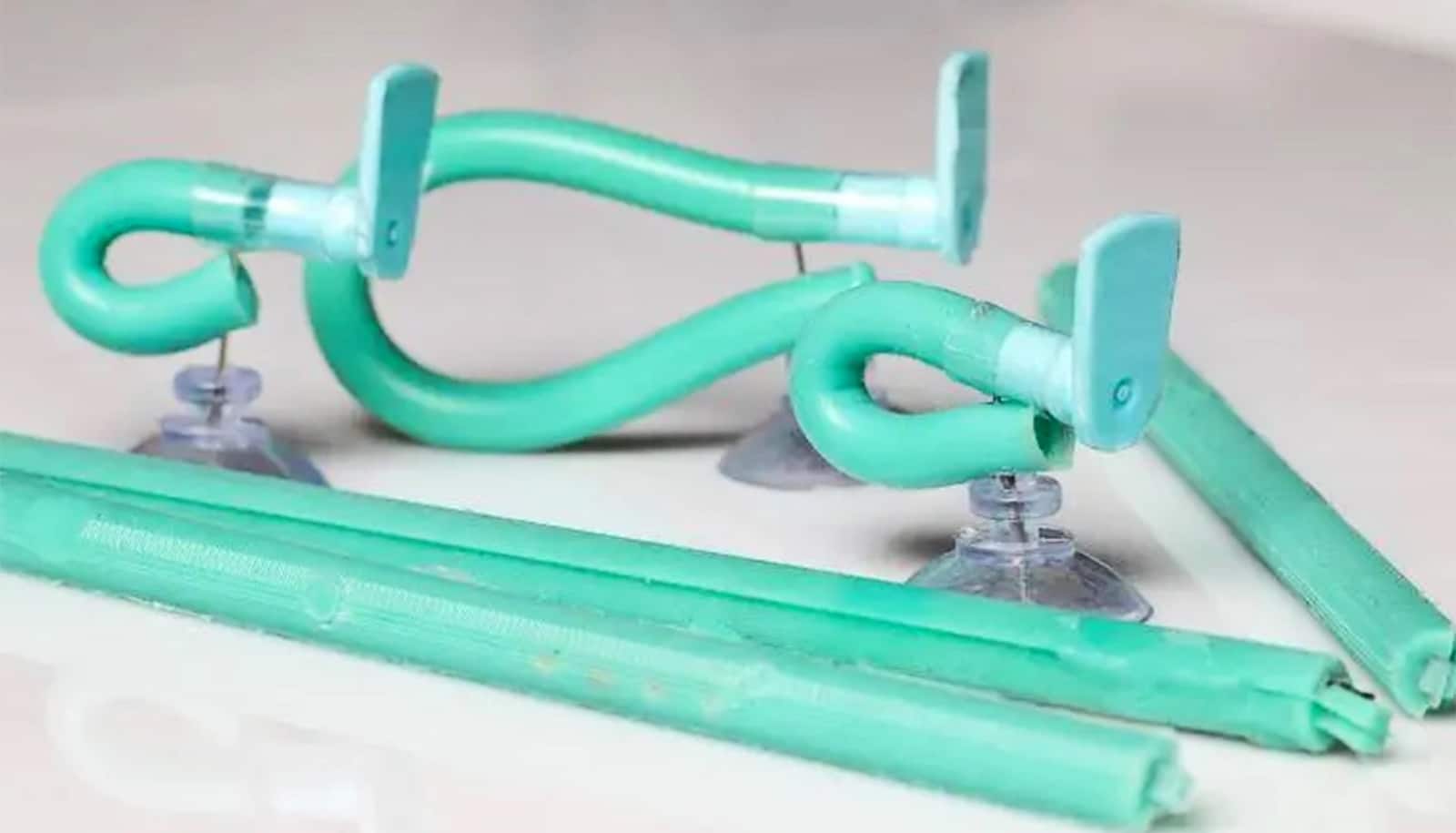A new study explains how tiny water bugs use fan-like propellers to zip across streams at speeds up to 120 body lengths per second.
The researchers then created a similar fan structure and used it to propel and maneuver an insect-sized robot.
The discovery offers new possibilities for designing small machines that could operate during floods or other challenging situations.
“Scientists thought the bugs used their muscles to control the fans, so we were surprised to learn that surface tension actually powers them,” says Saad Bhamla, one of the study’s authors and associate professor in Georgia Tech’s School of Chemical and Biomolecular Engineering.
Instead of relying on their muscles, the insects about the size of a grain of rice use the water’s surface tension and elastic forces to morph the ribbon-shaped fans on the end of their legs to slice the water surface and change directions.

Once they understood the mechanism, the team built a self-deployable, one-milligram fan and installed it into an insect-sized robot capable of accelerating, braking, and maneuvering right and left.
The study appears in the journal Science.
Because contact with water triggers a mechanical response (opening the bug’s fans), the researchers suggested that the findings open the door to designing more energy-efficient and adaptive microrobots for use in rivers, wetlands, or flooded urban areas.
The research team, which included the University of California, Berkeley, and South Korea’s Ajou University, studied the millimeter-sized Rhagovelia. The water bug glides across fast-moving streams thanks to their fan-like propellers. The team found that the structures passively open and close 10 times faster than the blink of an eye.
The structures allow the bugs to execute sharp turns in just 50 milliseconds, rivaling the rapid aerial maneuvers of flies. In addition, the insects can produce wakes on the surface of the water that resemble the vortexes produced by flying wings.
Victor Ortega-Jimenez, a former Georgia Tech research scientist and the study’s lead author, first saw the ripple bugs during the pandemic while working at Kennesaw State University.
“These tiny insects were skimming and turning so rapidly across the surface of turbulent streams that they resembled flying insects,” says Ortega-Jimenez, assistant professor in Berkeley’s integrative biology department.
“How do they do it? That question stayed with me and took more than five years of incredible collaborative work to answer it.”
The next step was creating a robot inspired by the water striders. Ajou University Postdoctoral Researcher Dongjin Kim and Professor Je-Sung Koh solved a mystery of the fan’s design when they captured high-resolution images using a scanning electron microscope.

“Our robotic fans self-morph using nothing but water surface forces and flexible geometry, just like their biological counterparts. It’s a form of mechanical embedded intelligence refined by nature through millions of years of evolution,” says Koh, a senior author of the study.
“In small-scale robotics, these kinds of efficient and unique mechanisms would be a key enabling technology for overcoming limits in miniaturization of conventional robots.”
For example, the researchers say the findings lay the foundation for future design of compact, semi-aquatic robots that can explore water surfaces in challenging, fast-flowing environments.
Support for this research came from the National Science Foundation and the National Institutes of Health. Any opinions, findings, and conclusions or recommendations expressed in this material are those of the authors and do not necessarily reflect the views of any funding agency.
Source: Georgia Tech



